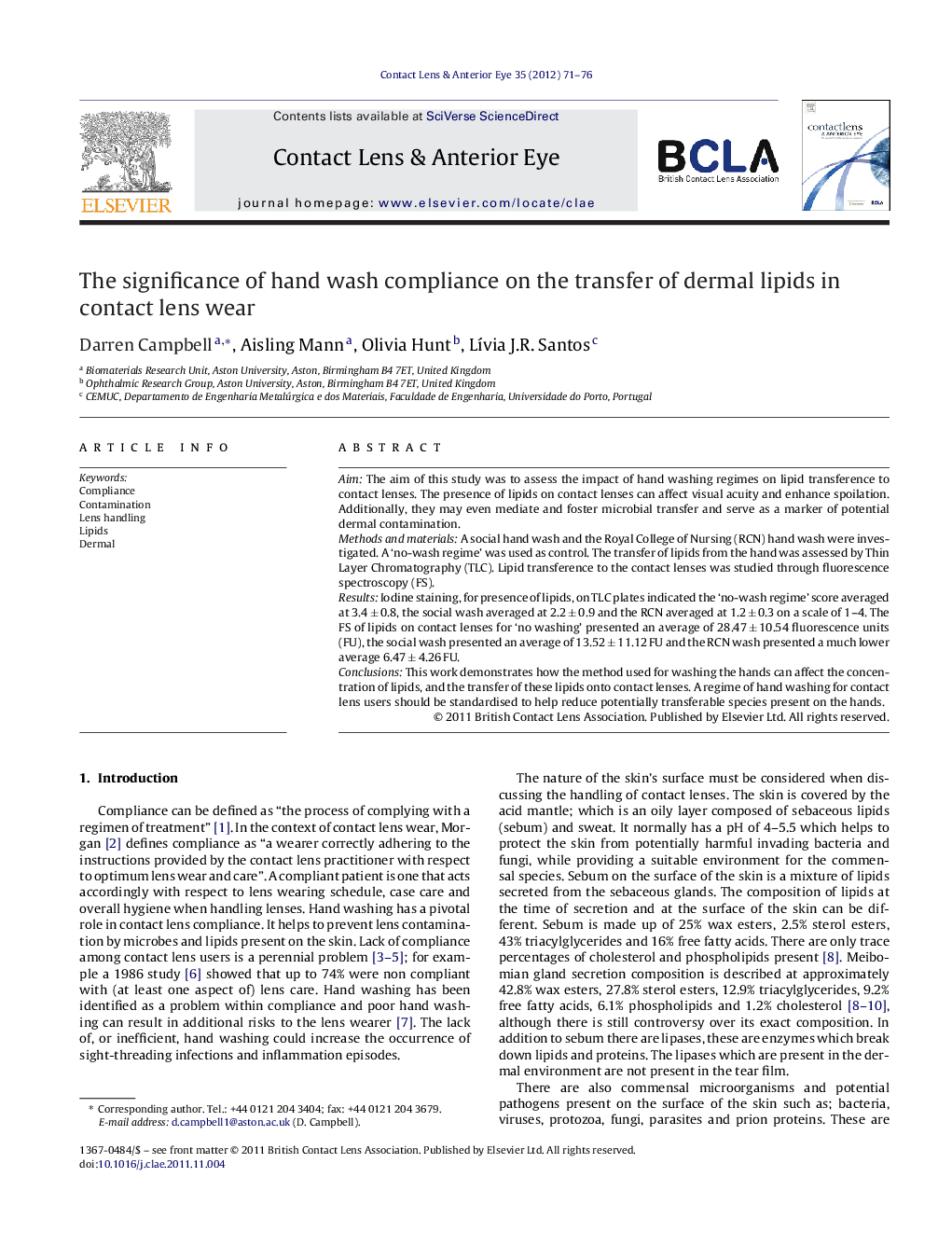| Article ID | Journal | Published Year | Pages | File Type |
|---|---|---|---|---|
| 2699311 | Contact Lens and Anterior Eye | 2012 | 6 Pages |
AimThe aim of this study was to assess the impact of hand washing regimes on lipid transference to contact lenses. The presence of lipids on contact lenses can affect visual acuity and enhance spoilation. Additionally, they may even mediate and foster microbial transfer and serve as a marker of potential dermal contamination.Methods and materialsA social hand wash and the Royal College of Nursing (RCN) hand wash were investigated. A ‘no-wash regime’ was used as control. The transfer of lipids from the hand was assessed by Thin Layer Chromatography (TLC). Lipid transference to the contact lenses was studied through fluorescence spectroscopy (FS).ResultsIodine staining, for presence of lipids, on TLC plates indicated the ‘no-wash regime’ score averaged at 3.4 ± 0.8, the social wash averaged at 2.2 ± 0.9 and the RCN averaged at 1.2 ± 0.3 on a scale of 1–4. The FS of lipids on contact lenses for ‘no washing’ presented an average of 28.47 ± 10.54 fluorescence units (FU), the social wash presented an average of 13.52 ± 11.12 FU and the RCN wash presented a much lower average 6.47 ± 4.26 FU.ConclusionsThis work demonstrates how the method used for washing the hands can affect the concentration of lipids, and the transfer of these lipids onto contact lenses. A regime of hand washing for contact lens users should be standardised to help reduce potentially transferable species present on the hands.
